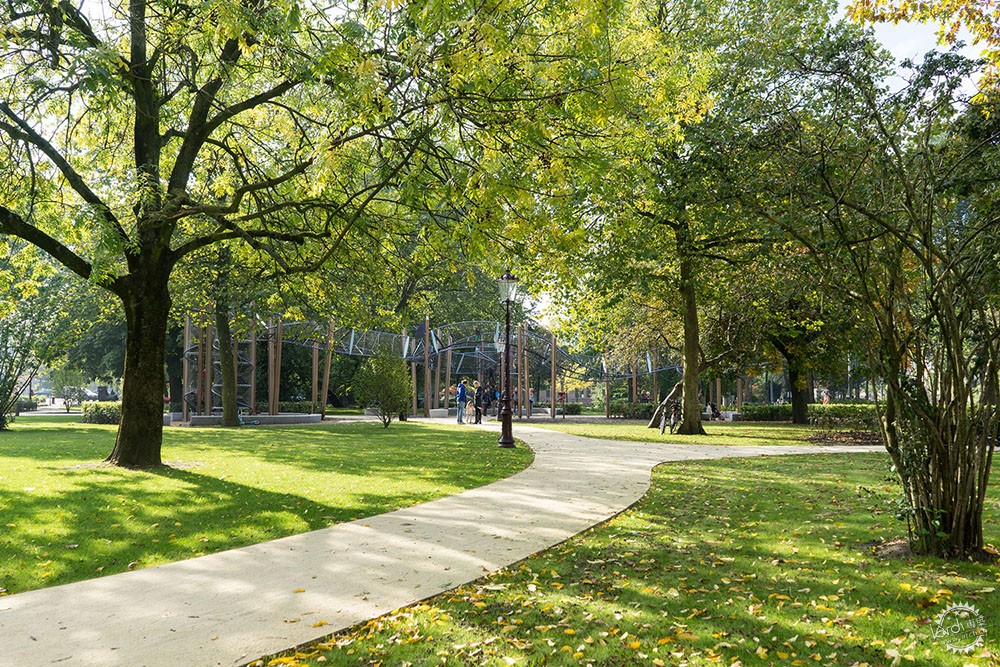
Fredrik Hendrikplantsoen by Carve Landscape Architecture
由专筑网王帅,李韧编译
来自Carve事务所的描述:Fredrik Hendrikplantsoen项目位于市中心西侧,坐落在阿姆斯特丹绿树成荫的历史街区。在17世纪,该地区仅仅是绿化场所,直到1630年,“Houtzagerscompagnie”、“Sawmills公司”在这里常驻。这是一处风水宝地,常年盛行西风,加上以往的海沟系统,形成天然的木材水运系统。1630年至1670年期间,这里建成了许多锯木厂,该地区被称为“Molenbuurt”,也就是“磨坊区”。大量的锯木厂使这里具备了工业化前的特点。19世纪,由城市扩建,许多锯木厂被拆除。该地区在1877年按照Kalff方案进行了城市扩建,方案基于现有的道路和河流。Kalff的方案里还提出了混合住房类型,这就是Frederik Hendrik区最初成为汇集各行各业人群社区的原因。Frederik Hendrikstraat是该地区的中心,直到1886年成为Frederik Hendrikplantsoen绿色公园。即使到了今天,曾经种植的树木仍然存在。然而,所有的磨坊都消失了,除了“Otter”,它建于1631年,至今仍是Fredrik Hendrik地区的重要文化历史元素。
Carve: The Fredrik Hendrikplantsoen is situated west of the city center, in one of the greenest historic neighbourhoods of Amsterdam. In the 17th century this area was no more than a greenfield site, until in 1630, the ‘Houtzagerscompagnie’, the ‘Sawmills-company’, settled down here. The location was ideal because of its dominant west-wind, and the old system of trenches that enabled waterborne transport of timber. Between 1630 and 1670, as many sawmills were built that this area became known as ‘Molenbuurt’, or: ‘Mill’s district’. The sawmills gave the neighbourhood a pre-industrial character. In the 19th century, the Mill’s district were torn down because of a city extension: the Frederik Hendrikbuurt. The urban plan, drawn by Kalff in 1877, was based on the pattern of existing paths and trenches. It also proposed a mix of housing types, which is why the Frederik Hendrik district originally is a neighbourhood where people from all walks of life live together. The Frederik Hendrikstraat has always been the backbone of the district, ending at the Frederik Hendrikplantsoen, a little green park that was built in 1886. Even today, some trees still date from that period. All mills, though, disappeared, except for one; the ‘Otter’, which was built in 1631 and still is an important cultural-historical element in the Fredrik Hendrik district.
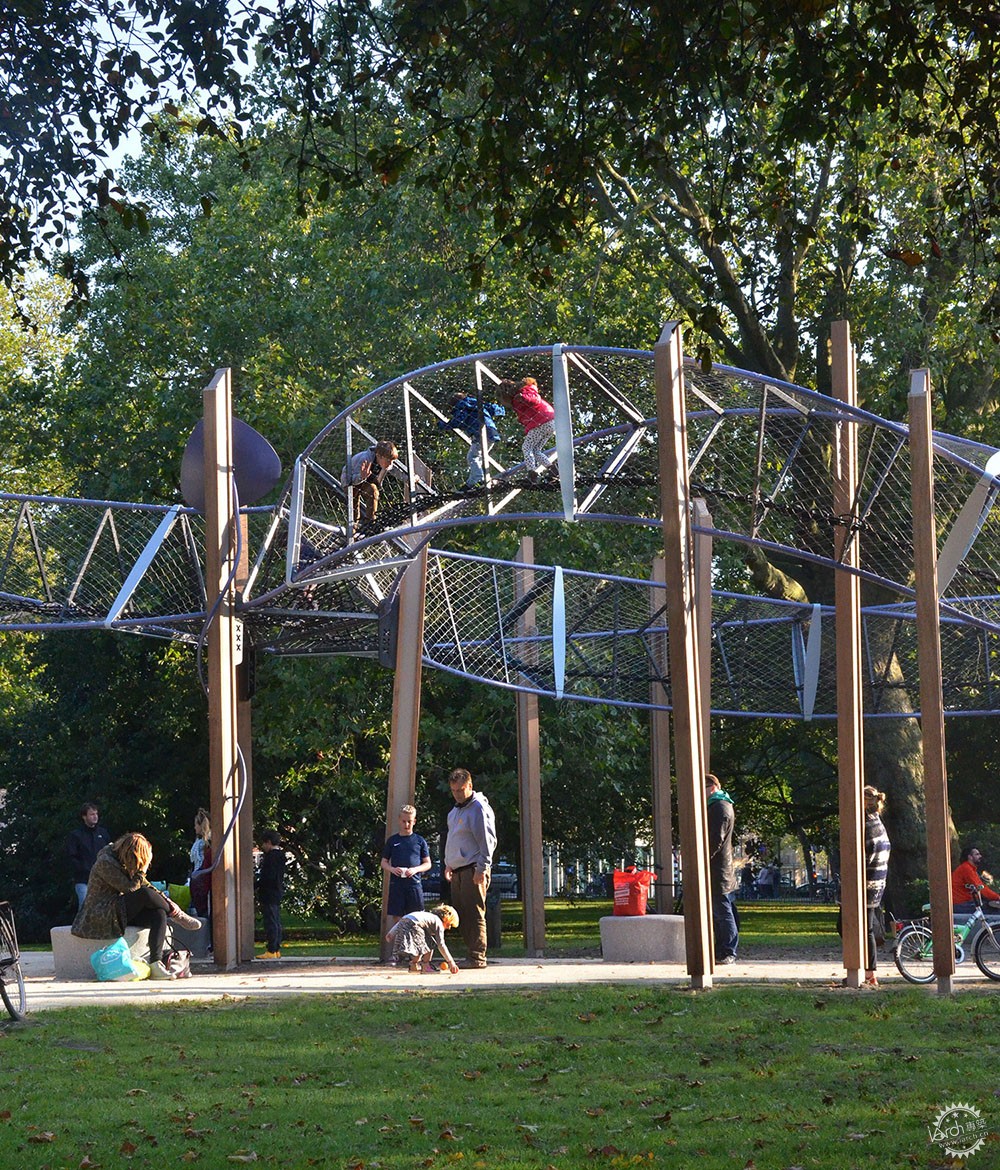
几十年来,Frederik Hendrikplantsoen公园逐渐荒废,这里杂草丛生。附近社区对其一再进行修整,到了2023年,可容纳800辆车的Singelgracht地下停车场将建成,为与之配套,Frederik Hendrikplantsoen公园在2012年开始了翻新。
Throughout the decades, the Frederik Hendrikplantsoen deteriorated and was overgrown with bushes. Despite a well-organised resistance of the neighbourhood, in 2023 the Singelgracht parking garage will be built, counting 800 underground parking spaces. In the context of this development, the Frederik Hendrikplantsoen has been upgraded in 2012.
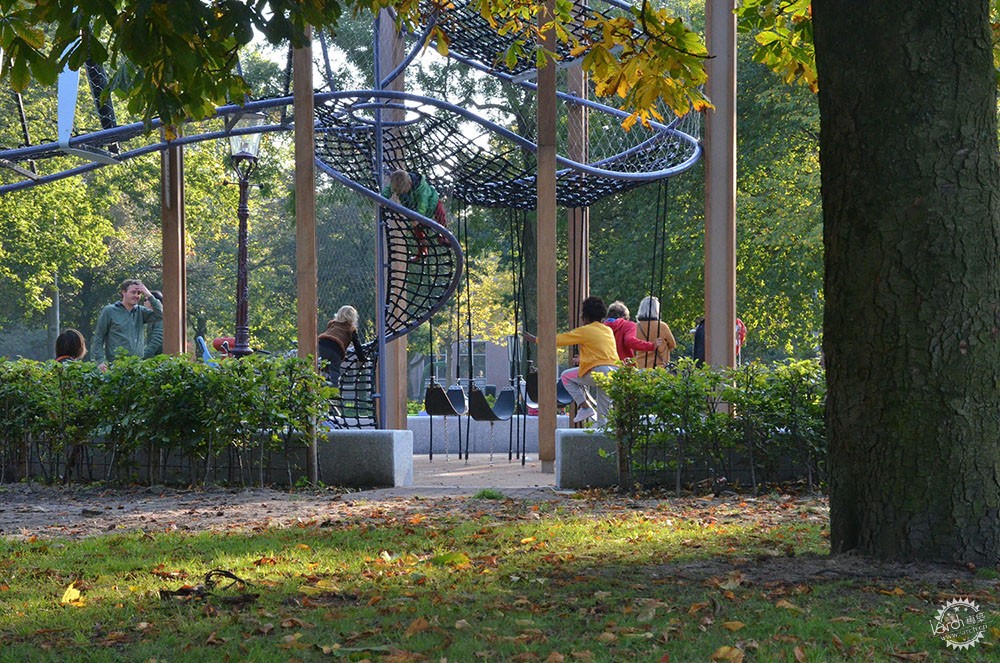

新设计将公园和周边的环境重新连接起来,设计师引入了全新的路径系统,并为公园增加了新功能。蜿蜒的小路连接着公园的不同部分,设计师还在其中安置了大型游乐区,这里曾经有一个圆形沙坑。Carve事务所与当地居民一起讨论了在密集活动区域建立全新游乐区的可能性。
The new design re-connects the park with its surroundings, introducing a new path system and adding new functions to the park. The meandering paths connect the different parts of the park, among which a large play-zone that is located exactly at the same spot where there used to be a circular sand pit and play objects. Together with local residents, Carve discussed the possibilities for the new play-zones during an intensive participation process.
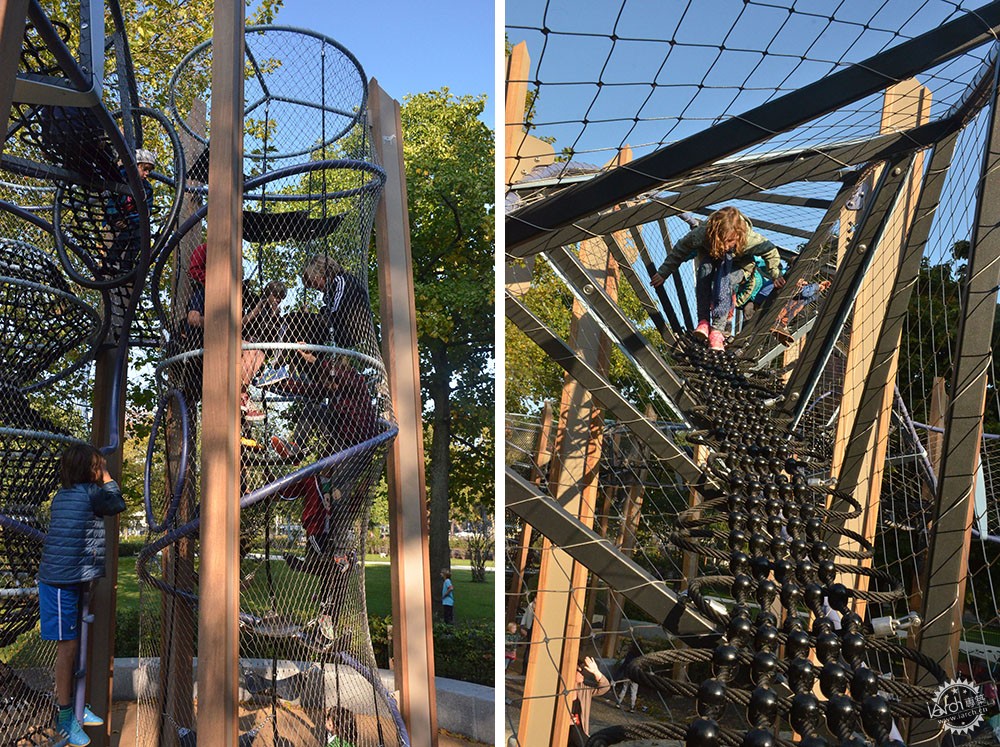
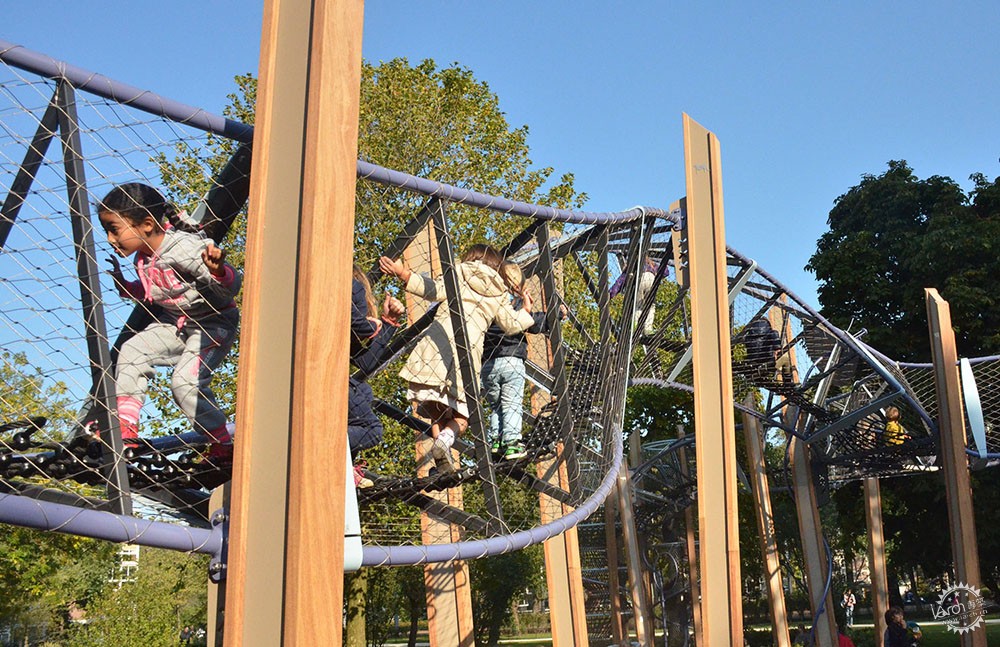
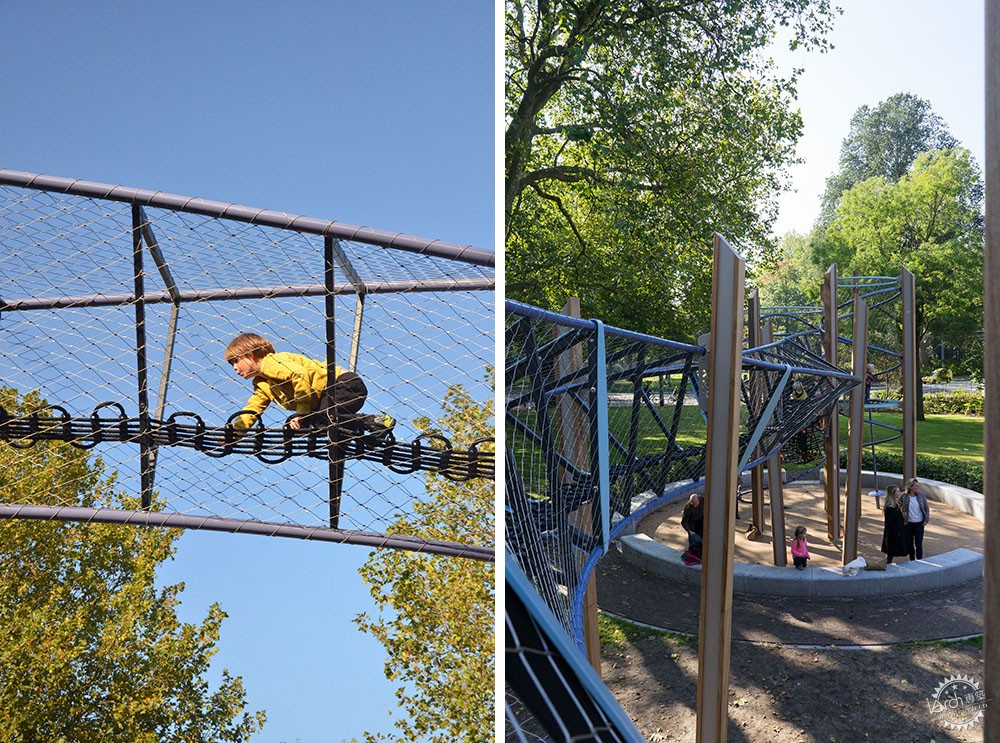
Carve事务所在设计过程中通过引入标志性的“空中桥”将设计方案中的三个游戏区连接起来,这些“空中桥”的方向与下面的路径系统相反。正因如此,公园的小路在桥下畅通无阻。同时,游戏区很大一部分向上抬高,这尽可能减少了游戏区对空间的影响,所以在下面玩耍的孩子和散步的人群之间形成了互动。
In the design, Carve connects the three planned play-zones by introducing an iconic ‘air bridge’, that is oriented in the opposite direction to the path system below. Because of this, the paths of the park continue in an unobstructed way underneath the object. Also, because a large part of the play-zone is elevated, as little space as possible is absorbed by the play-zones, hence introducing an interesting interaction between the playing children and people who take a stroll underneath the object.
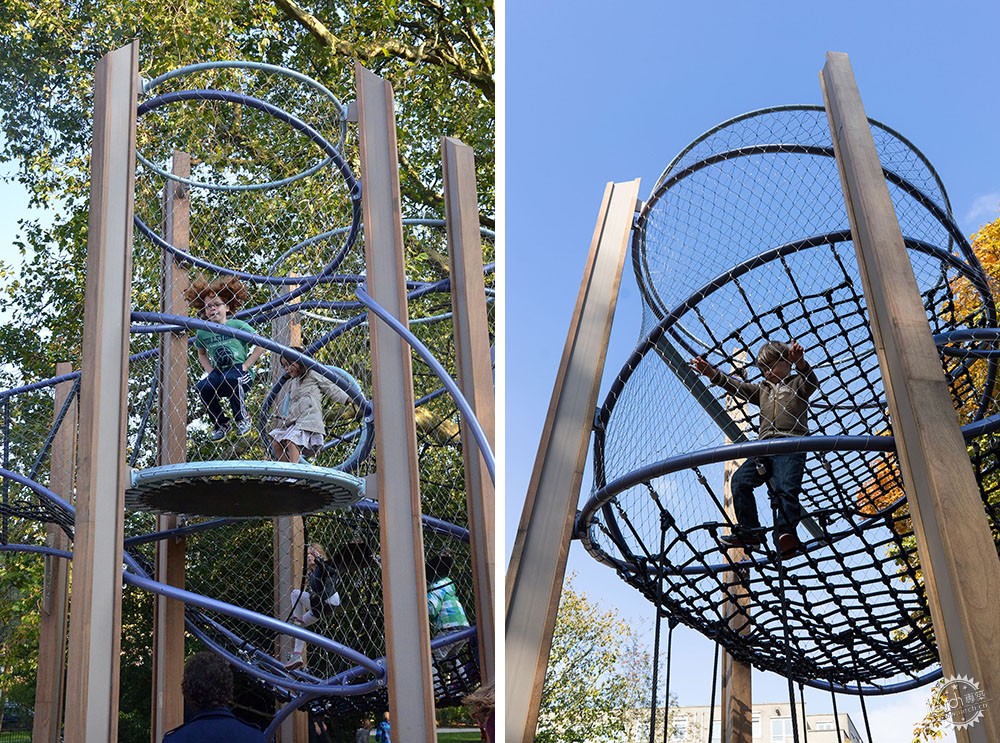


游乐场在离地面5米的地方盘旋,它穿梭于历史名木的树冠之间,为公园增添了一抹新意。三座游戏塔针对不同年龄的人群设置有不同的功能,孩子们可以攀爬,可以在吊床上玩耍,也可以在大游戏网内休息,或者跳到四米高的蹦床上。扭曲的环系在金属杆子上,杆子外面包裹着木头,它们会随着时间的变化而变化。细致观察就会看到镶嵌的小动物图标,这是对曾经这里锯木厂的最好致敬。
The play garland, which hovers a spectacular five meters above the ground, between the canopies of the historic trees, adds a new layer to the park. The three play towers all have a different function, that is connected to a specific age group. Children can climb, lounge in hammocks and a large play-net, or jump on a trampoline at four meters height. The twisted play garland rests on metal poles, which are clad with wood, that will turn grey in time. Whoever takes a careful look, will see little animal-icons embedded into the poles, as a subtle reference to the many sawmills that once stood here.
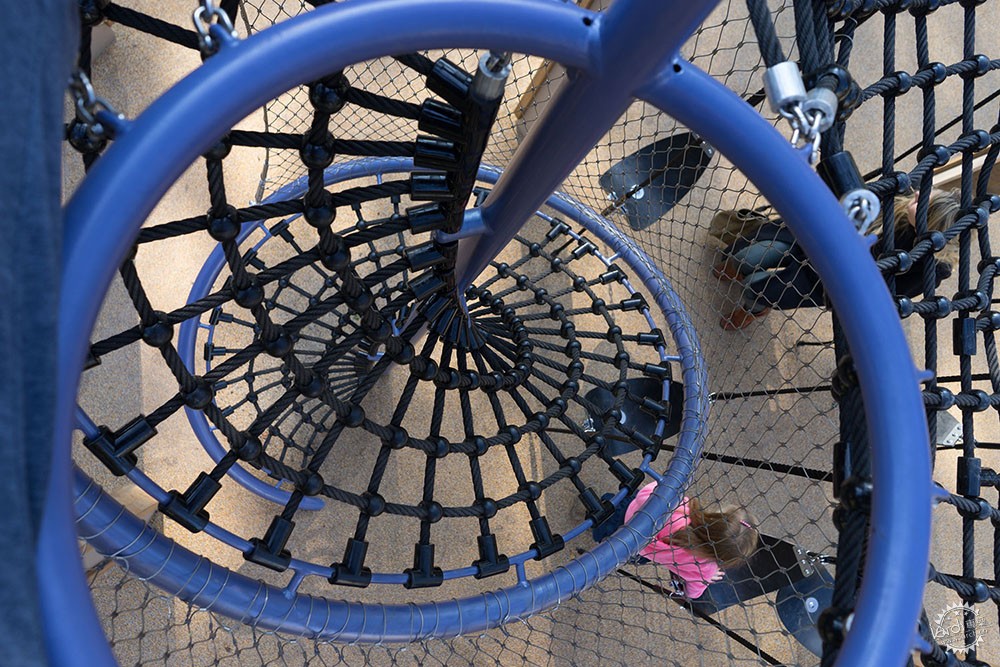


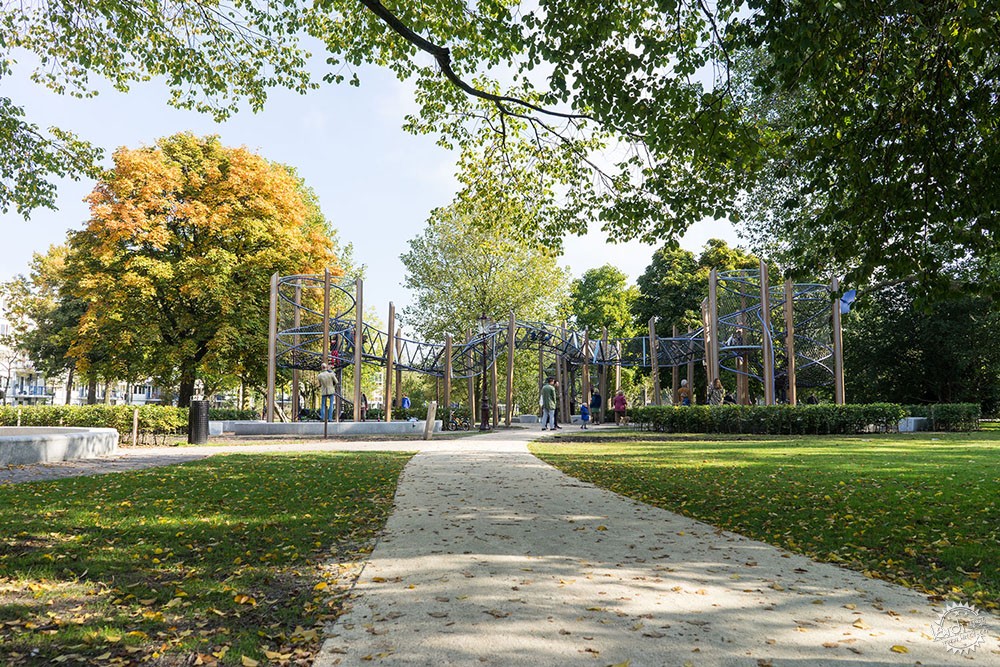
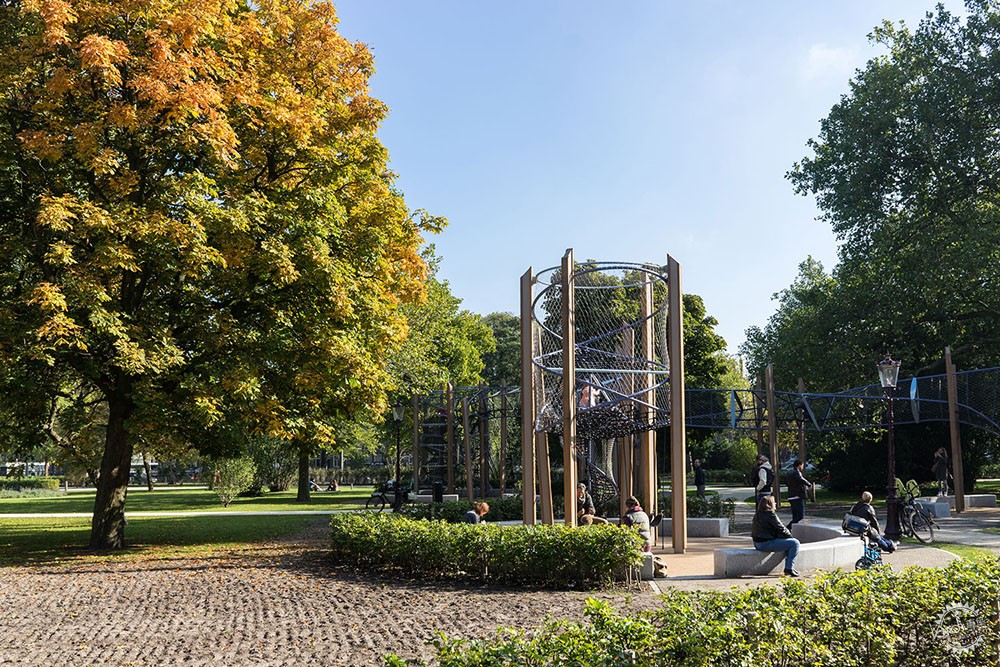
景观设计:Carve景观建筑事务所
设计内容:结合公园与周围环境
面积:450 ㎡(全场),花园总长:50 米
网站:http://www.carve.nl/en/item/181
参与设计:
Carve事务所团队:Elger Blitz, Thomas Tiel Groenestege, Lucas Beukers, Jona de Bokx, Jasper van der Schaaf, Hannah Schubert
合作参与:Buro Sant en Co landschapsarchitecten (公园重新设计)与Atelier Joep van Lieshout (艺术设计)
照片版权:Marleen Beek
项目地点:荷兰,阿姆斯特丹
设计年份:2012-2014年
完成日期:2015.10
Short office name: Carve
Role of the office in the project: new design to re-connect the park with its surroundings.
Size: 450 m2 (total play-zone), total length of play garland: 50 meter
Website: http://www.carve.nl/en/item/181
Other designers involved in the design of landscape:
Carve team: Elger Blitz, Thomas Tiel Groenestege, Lucas Beukers, Jona de Bokx, Jasper van der Schaaf, Hannah Schubert
In collaboration with: Buro Sant en Co landschapsarchitecten (redesign park) and Atelier Joep van Lieshout (art objects)
Photocredits: Carve (Marleen Beek)
Project location: Frederik Hendrikplantsoen, Amsterdam
Design years: 2012-2014
Year Completed: October 2015
|
|
